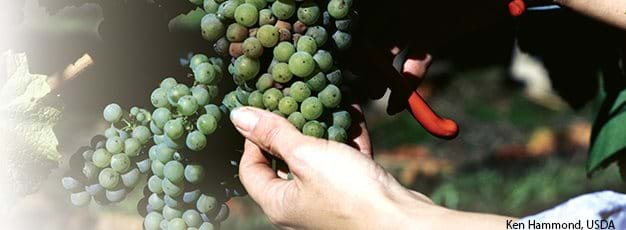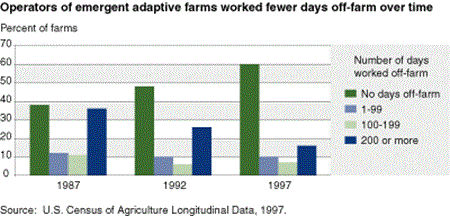Small Farms Can Grow Into Large Enterprises

Today’s farmers know first-hand that farming is not what it used to be. Farmers are responding to challenges—competition with global markets, the need for new alternative markets where traditional markets have declined, and consumer demands for fresher, safer products—in order to expand their operations. Smaller farms, in particular, may have more difficulty in adapting to the changing marketplace because of, among other things, lack of capital and other resources.
Yet, as a recent ERS analysis shows, some smaller farms manage to grow into large commercial operations.
Using agricultural census data spanning 1982-97, ERS researchers identified over 5,000 small part-time farm enterprises with limited sales and tracked them over time. In 1982, these farms had less than $10,000 in annual sales but produced relatively high-value products, generating at least $500 of sales per acre in 1997.
Some operators of such farms may not wish to expand into larger enterprises because of other interests. But by 1997, 644 of these farms had grown into commercial operations with annual sales of $100,000 or more, and 97 of them had over $500,000 in sales. Total 1997 sales among these 644 emergent adaptive farms (EAFs) came to $224.9 million, compared with less than $5 million in total group sales for 1982. The analysis revealed several characteristics of EAFs:
- The majority (61 percent) of EAF operators in 1982 were young to middle-aged (under age 44) farmers/ranchers. Among all farmers, only 36 percent fall into this age group.
- Most EAFs were organized as sole proprietorships, and, over time, about one-fifth moved to partnerships or incorporated.
- Three commodity groups—grape vineyards, nursery and tree products, and vegetable and melon farming—accounted for 41 percent ($93 million) of sales in 1997, while floriculture, other noncitrus fruit, and tree nut farming accounted for another 23 percent ($54 million).
- Off-farm work offered vital financial support during the early years of the typical EAF. As their businesses expanded, however, EAF operators spent more time on their farming enterprises. Thirty-five percent of EAF operators worked at least 200 days off the farm in 1987, but that share declined to 16 percent by 1997 as farm operations expanded.
Most EAFs were in major fruit- and vegetable-producing States, often in or near metropolitan areas. Metro proximity proved critically important to their success: It provided both off-farm employment options to help finance tiny startups and close-by marketing opportunities to support their growth.
Farm Structure and Organization, by Daniel Bonin, USDA, Economic Research Service, January 2024


